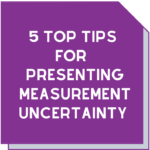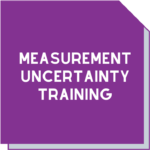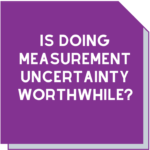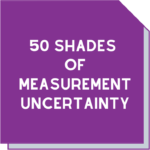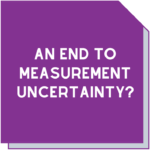Putting together the Measurement Uncertainty puzzle
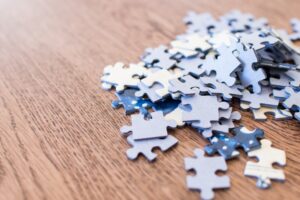 We hear it from laboratories all the time (quite often accompanied by an eye-roll or a groan!). Measurement Uncertainty (MU) is something that laboratories do because they have to. Because ISO 17025 and ISO 15189 say so. And, of course, because NATA says so.
We hear it from laboratories all the time (quite often accompanied by an eye-roll or a groan!). Measurement Uncertainty (MU) is something that laboratories do because they have to. Because ISO 17025 and ISO 15189 say so. And, of course, because NATA says so.
Every measurement is subject to some uncertainty. That’s why the MU process is critical to making decisions and assessing risk. It should be used to review the quality of the results your lab produces.
However, labs tend to see MU as fragments, as pieces of a puzzle at their fingertips but with no clear idea about how they fit together.
Let’s look at three areas where investing in MU can help your lab.
Equipment calibrations
You know you have to calibrate your equipment, but this can be an expensive process.
This is where MU can help. You can use it to determine where to spend your money, what equipment you need to calibrate and how frequently you do this.
NATA publishes documents such as the General Equipment Table. However, since these are for guidance and not mandatory, labs have the flexibility to customise their Equipment Assurance Program to suit their needs and budget. Using MU will make this process much more effective.
Equipment purchases
Buying new equipment always carries a measure of risk. Labs need to be sure that the equipment they’re investing in is not only fit for purpose but delivers the best possible results.
Developing and using a good MU budget can show you where to invest your money and ensure you get maximum bang for your hard-earned buck.
Staff competence
In the show Breaking Bad, an over-qualified chemistry teacher shows a drug addict how to properly use scientific equipment to make money. Nobody questioned the drug addict’s competence once he was shown how to use the equipment. However, in the real world, that’s not the case.
Labs can use MU to show whether competence to perform calibrations of POVAs and other equipment in routine use is an issue. It can also demonstrate whether the skills of your staff influence the accuracy and reliability of your lab results and by how much.
This means that you can determine whether it’s worthwhile to make method improvements. For example, perhaps you could tighten up your sample preparation processes, leading to a smaller uncertainty for your lab results.
 Where do you start?
Where do you start?
This may all sound useful but if you’re like many other labs, you’re probably still sitting and staring at the puzzle pieces, not sure where to begin.
Fortunately, we’ve developed a unique and highly interactive workshop, Measurement Uncertainty Made Simple. This will help you master the uses of MU and make your own decisions about the key elements of your laboratory processes.
Participants bring along a method and associated information and work through an example from their own laboratory. This means that participants can intelligently evaluate the effects of various sources of measurement uncertainty using a real-world example.
By developing an appropriate strategy, they’ll learn to meet NATA’s requirements on equipment assurance, in-house calibration, and equipment verification.
The principles covered in this course can be extended to include different analytical techniques and used to make decisions about:
- targeting competency assessments and training programs
- conducting equipment checks in-house or sending out for calibration
- purchasing new equipment
- improving method performance
Don’t just take our word for it!
Our previous workshops have been extremely successful. Participants have described them as practical, thought-provoking, and interactive. Plus, 100% of the participants said they would recommend it to their colleagues!
And the managers who sent them along to the course were happy too:
“Thanks for putting the workshop together …. I believe that these sorts of events will become a necessary component in helping labs keep on top of what options are available for them to comply with the ever- increasing requirements for managing equipment calibrations, checks etc.… also a great opportunity for “group therapy” sessions to help everyone cope with the confusion related to equipment matters” – Compliance Manager
“Glowing reports from our staff member and lots of useful info that we will be able to put into use” – Quality Manager
We also follow up with participants two weeks after the course. This is to ensure they’re confident and comfortable carrying out MU back in their lab.
You can read more about the course on our training page and as always, we’re just an email away at info@masmanagementsystems.com.au.
Remember, you don’t have to do this alone!
Download the article Putting together the MU puzzle


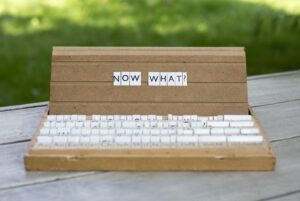 Where do you start?
Where do you start?